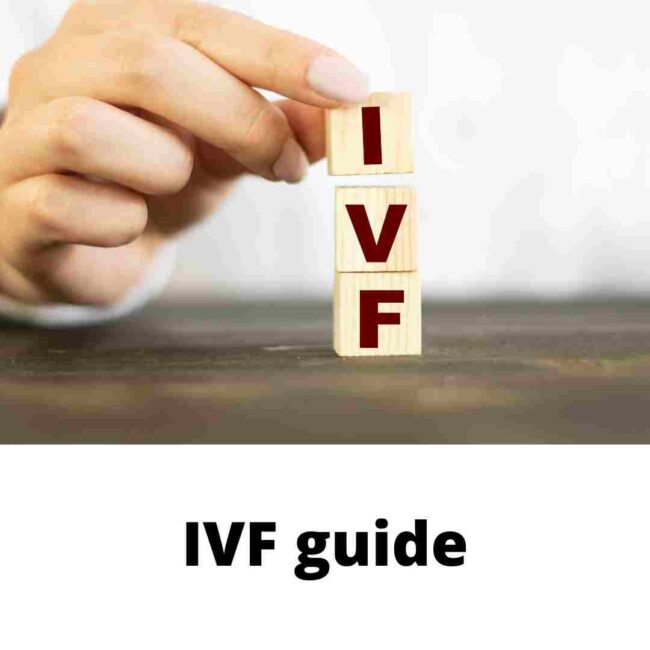
Many couples who have trouble conceiving turn to fertility treatments to help them get pregnant. While there are many different types of fertility treatment available, they all share the common goal of helping a woman to become pregnant. In some cases, fertility treatments can be used to correct a problem with the reproductive system that is making it difficult for the woman to conceive. In this article, we’ll read about the top Fertility Treatments Used by Couples.
In other cases, fertility treatments can be used to increase the chances of conception by providing the woman with extra eggs or by increasing the number of sperm that are available. Regardless of the reason why fertility treatments are used, they can often be very successful in helping couples to conceive.
Artficial Insemination and Interauterine Insemination
Artificial insemination (AI) is a fertility treatment that involves placing sperm into the uterus of a woman using a syringe. Intrauterine insemination (IUI) is a type of AI in which the sperm is placed directly into the uterine cavity using a thin, flexible catheter. Both AI and IUI are often used in conjunction with fertility drugs to increase the chances of pregnancy. The success rates of AI and IUI vary depending on factors such as the age of the patient, the cause of infertility, and the number of treatments that have been attempted. Overall, AI and IUI are relatively safe and effective fertility treatments with a high success rate.
In vitro fertilization (IVF)
It is a medical procedure in which eggs are fertilized outside of the body. IVF is typically used when other fertility treatments have failed or when the woman has a medical condition that prevents her from conceiving naturally. The first step in the IVF process is to stimulate the ovaries to produce multiple eggs. This is done using medication, which is injected into the woman’s abdomen. Once the eggs are mature, they are retrieved from the ovaries using a needle.
They are then placed in a dish with sperm, and incubated until fertilization occurs. The resulting embryos are then transferred to the woman’s uterus, where they will hopefully implant and result in a pregnancy. IVF is a complex and expensive procedure, but it can be a life-changing treatment for couples who have been struggling to conceive.
Donor eggs fertility treatment
IT Is a popular option for couples who are unable to conceive using their own eggs. The process involves retrieving eggs from a donor, fertilizing them with the father’s sperm, and then implanting the embryo into the mother’s uterus. The donor eggs can come from a friend or family member, or they can be purchased from a fertility clinic. Donor eggs have helped many couples have children who might not otherwise have been able to conceive.
The main advantage of this fertility treatment is that it offers a higher success rate than other methods, such as in vitro fertilization (IVF). In addition, donor eggs fertility treatment is less expensive than IVF, making it more affordable for couples who are struggling to afford fertility treatments. While donor eggs fertility treatment is not right for everyone, it is an option that should be considered by couples who are having difficulty conceiving. You can get further consultation by visiting an IVF center near you. For example, if you live in Mumbai, you can look for the best IVF center in Mumbai
Surrogacy
It is one of the most common Fertility Treatments Used by Couples. Surrogacy is a fertility treatment in which a woman (the surrogate) carries and delivers a baby for another couple or person. The surrogate is not the baby’s biological mother; rather, she is a carrier for the baby. In most cases, the couple or person who commissions the surrogacy arrangement are the baby’s biological parents. Surrogacy is an option for couples or individuals who are unable to conceive or carry a pregnancy to term. It is also an option for same-sex male couples. In surrogacy arrangements, there are three parties involved: the intended parents, the surrogate, and the egg donor (if necessary).
The intended parents are the couple or individuals who committed the surrogacy arrangement; they are also the baby’s biological parents. The surrogate is the woman who carries and delivers the baby for the intended parents. The egg donor is, as her title suggests, the woman who provides hereggs to be used in fertility treatments. In some cases, the surrogate may also be the egg donor; however, this is not always the case.
Egg freezing
Egg freezing, also known as oocyte cryopreservation, is a fertility treatment that involves extracting eggs from a woman’s ovaries and storing them in a frozen state. The eggs can be thawed at a later date and used for in vitro fertilization (IVF). Egg freezing is typically recommended for women who are about to undergo cancer treatment or other medical procedures that could damage their ovaries. It may also be an option for women who want to delay childbearing until they are older. The success rate of egg freezing varies depending on a number of factors, but it is generally considered to be a safe and effective fertility treatment.
Fertility Drugs
It is one of the Top Fertility Treatments Used by Couples. Fertility drugs are a type of medication that helps women to ovulate. They are typically used in women who have polycystic ovarian syndrome (PCOS) or other conditions that prevent ovulation. The most commonly used fertility drug is Clomiphene, which is taken in pill form. Clomiphene works by blocking the estrogen receptors in the brain, which tricks the body into thinking that there is less estrogen in the system. This increase in FSH production leads to ovulation. In some cases, fertility drugs may be used in combination with other treatments, such as IUI or IVF.
While fertility drugs can be very effective in helping women to ovulate, they do come with some risks. The most common side effect of Clomiphene is hot flashes. Other possible side effects include mood swings, weight gain, and ovarian cysts. Although these side effects are usually mild and go away after treatment is discontinued, some women may experience more severe side effects, such as ovarian hyperstimulation syndrome (OHSS).
Top Fertility Treatments Used by Couples: Conclusion
If you and your partner are struggling to conceive, you’re not alone. In fact, one in eight couples have trouble getting pregnant or carrying a baby to term. Don’t lose hope though; there are many fertility treatments available that can help increase your chances of conceiving.
